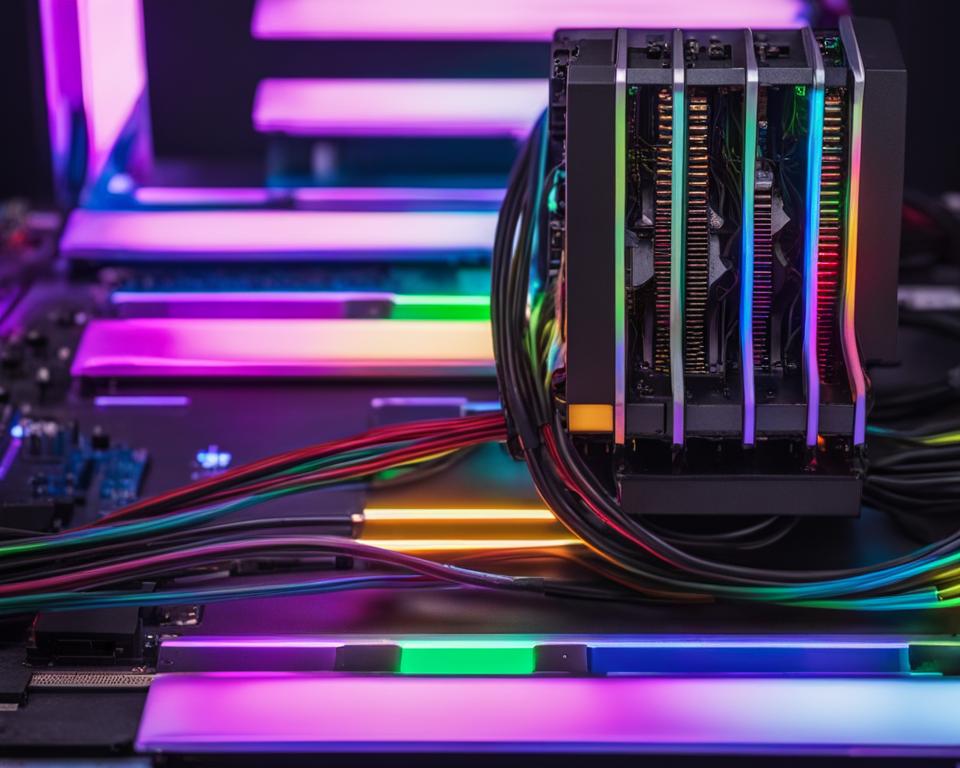Building or upgrading a PC with RGB lighting has become increasingly popular among tech enthusiasts and gamers. The ability to customize the color and lighting effects of your PC’s components adds a visually stunning element to your setup.
But to unlock the full potential of RGB fans and achieve that mesmerizing display of lights, you need to know how to connect RGB fans to the motherboard. This skill allows you to control the fan colors, synchronize them with other RGB components, and create a truly immersive lighting experience.
Let’s dive into a relatable scenario to set the stage for our main content:
Meet Alex, a passionate PC gamer who recently decided to upgrade his rig with RGB fans. Eager to transform his setup into a captivating visual spectacle, Alex found himself confronted with a task he hadn’t encountered before: connecting the RGB fans to his motherboard.
After some research and confusion, Alex managed to gather the necessary information and learned the step-by-step process of connecting RGB fans to a motherboard. His excitement grew as he imagined the vibrant colors pulsating through his PC case, enhancing his gaming experience.
With the knowledge at hand, Alex proceeded to connect the RGB fans to his motherboard, carefully following the instructions and double-checking each connection. Once the RGB fans were successfully installed, he opened the software provided by the manufacturer that allowed him to control the fan colors and lighting effects.
As he experimented with different colors, effects, and synchronization options, Alex was amazed at how his PC instantly transformed into a radiant masterpiece. The combination of RGB fans, along with the illumination from his other RGB components, created a captivating, personalized lighting display that truly represented his unique gaming style.
Now that you’re ready to embark on your journey of RGB customization, let’s explore the various methods and options available to connect RGB fans to your motherboard and unleash the potential of your PC’s lighting system.
Key Takeaways:
- Connecting RGB fans to the motherboard allows for customization and control over fan colors and lighting effects.
- Options for connecting RGB fans include using fan headers and splitters, fan controllers and hubs, software control, BIOS settings, and remote control.
- Software programs such as Corsair iCUE, NZXT CAM, RGB Fusion, and others provide extensive control over RGB fan colors and effects.
- BIOS settings allow for system-level control of fan speed and RGB lighting customization.
- Remote control options provide convenience and ease of use for changing fan speed and RGB colors.
Connecting RGB Fans Using Fan Headers and Splitters
When it comes to connecting RGB fans to your motherboard, one convenient method is utilizing fan headers and splitters. Most case fans come with either a 3-pin or 4-pin connector that can be easily plugged into the fan headers on your motherboard. These fan headers are typically labeled as CPU_FAN, SYS_FAN, CHA_FAN, or something similar, depending on the motherboard manufacturer.
If you have more RGB fans than there are available headers on your motherboard, don’t worry. Fan splitters can come to your rescue. These useful accessories allow you to connect multiple fans to a single header, expanding the number of fans you can install in your system.
However, it’s important to keep in mind that you shouldn’t overload the circuit by connecting too many fans to a single header. It’s generally recommended not to connect more than three fans to one header to ensure optimal performance and avoid any potential issues.
Once you have connected your RGB fans to the motherboard using the fan headers and splitters, you have the ability to control both the fan speed and RGB lighting. Depending on your motherboard, you can adjust these settings through either the BIOS or software provided by the motherboard manufacturer.
By taking advantage of the fan headers and splitters on your motherboard, you can easily connect and control the RGB fans in your system, providing a personalized and visually stunning lighting experience.
So, let’s take a closer look at how to connect RGB fans using fan headers and splitters. Here’s a step-by-step guide:
- Identify the fan headers on your motherboard labeled as CPU_FAN, SYS_FAN, CHA_FAN, or similar.
- Connect the RGB fans to the appropriate fan headers on the motherboard using the 3-pin or 4-pin connectors.
- If you have more fans than available headers, use fan splitters to connect multiple fans to a single header.
- Make sure not to overload a single header by connecting more than three fans.
- Control the fan speed and RGB lighting through the BIOS or software provided by the motherboard manufacturer.
Following these steps will enable you to seamlessly connect and control your RGB fans using fan headers and splitters, allowing you to create a stunning lighting setup in your PC.
| Fan Headers | Fan Splitters | Control Options |
|---|---|---|
| Easily connect RGB fans to the motherboard. | Expand the number of fans you can install. | Control fan speed and RGB lighting through the BIOS or software. |
| Typically labeled as CPU_FAN, SYS_FAN, CHA_FAN, or similar. | Connect multiple fans to a single header. | Ensure not to overload a single header to avoid issues. |
| Recommended not to connect more than three fans to one header. |
Using Fan Controllers and Hubs for RGB Fan Control
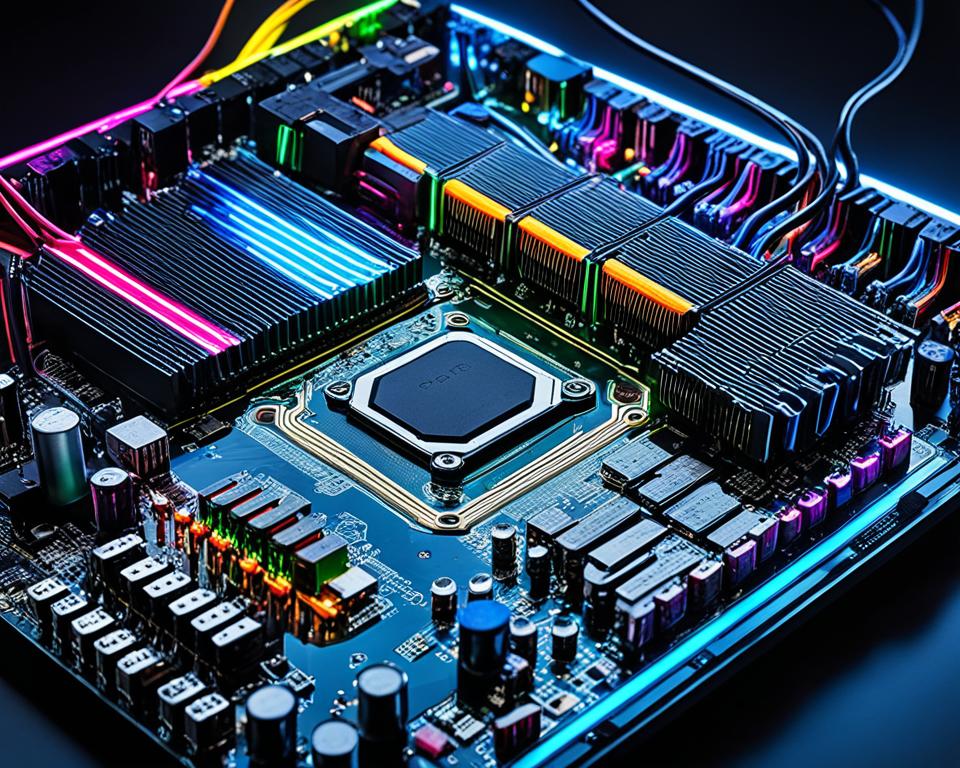
When it comes to connecting and controlling RGB fans, dedicated fan controllers and hubs offer a convenient solution. These devices provide a centralized way to manage your RGB fan speed and lighting effects, giving you full control over your PC’s aesthetics.
If you prefer a hands-on approach, fan controllers are a great option. Installed in drive bays, they usually come equipped with knobs or buttons that allow you to manually adjust fan speed and lighting effects. With a simple twist or press, you can fine-tune the airflow and create customized lighting displays that suit your preferences.
On the other hand, fan hubs provide a scalable solution for connecting multiple RGB fans. By connecting the fans to a hub, you can synchronize their RGB lighting, creating a cohesive and harmonious display. Fan hubs often come with additional features, such as RGB headers, which allow you to connect other devices, such as RGB strips, and align their lighting effects with your fans.
Controlling fan speed and RGB lighting on these devices can be done through software programs provided by the manufacturer. These programs offer an intuitive interface that allows you to customize fan speed curves, choose from a wide array of lighting effects, and even synchronize the RGB lighting across different components of your PC system.
Image:
Software Control for RGB Fan Speed and Lighting
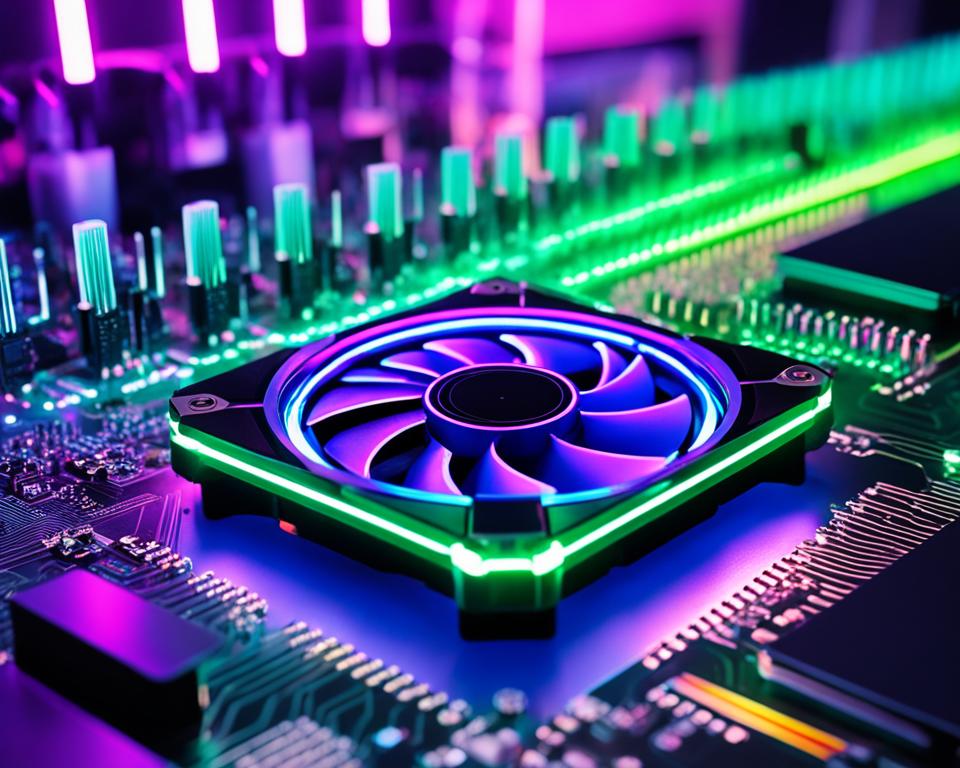
When it comes to controlling the RGB fan speed and lighting on your PC, software programs provide a convenient and customizable solution. Depending on the brand and model of your RGB fans, there are various software options available such as Corsair iCUE, NZXT CAM, RGB Fusion, and other compatible third-party software. These programs allow you to take full control over the fan speed and RGB lighting, offering a range of customization options to suit your preferences.
Corsair iCUE: Corsair iCUE is a powerful RGB software that enables you to not only control the fan speed but also synchronize RGB lighting across multiple Corsair RGB products. With iCUE, you can create stunning lighting effects, customize colors, and even set up intricate lighting profiles that react to changes in system temperature or CPU usage.
NZXT CAM: NZXT CAM offers intuitive fan control and lighting customization for NZXT products. With CAM’s user-friendly interface, you can adjust fan curves, monitor system temperatures, and fine-tune the RGB lighting effects. Whether you want a subtle color scheme or a dynamic RGB display, NZXT CAM gives you the tools to create your desired lighting setup.
RGB Fusion: Gigabyte’s RGB Fusion software allows you to control the RGB lighting on compatible Gigabyte motherboards and components. Through RGB Fusion, you can choose from a wide array of lighting effects, sync the RGB lighting across multiple devices, and even create customized profiles to match your unique style.
For those seeking additional customization options, third-party software solutions are also available. These software programs provide compatibility with various RGB fan brands and allow you to control fan speed and lighting effects from a single interface. Some popular third-party software options include Jacknet RGB and other fan control software that offer diverse features and compatibility with different RGB fan models.
By utilizing the power of RGB software, you can effortlessly synchronize RGB lighting, adjust fan speeds, and create stunning lighting effects that elevate the aesthetics of your PC setup.
Benefits of Software Control for RGB Fans:
- Comprehensive customization options for fan speed, colors, and effects
- Synchronization of RGB lighting effects across multiple components
- Ability to create intricate lighting profiles and reactive lighting based on system metrics
- User-friendly interfaces for intuitive control and management
- Compatibility with various RGB fan brands and models
Take advantage of the power and flexibility offered by RGB software to unlock the full potential of your RGB fans and create a visually stunning PC setup.
| Software | Features | Compatibility |
|---|---|---|
| Corsair iCUE | Fan speed control, RGB synchronization, customizable profiles | Corsair RGB fans and peripherals |
| NZXT CAM | Fan control, temperature monitoring, lighting customization | NZXT products |
| RGB Fusion | Wide range of lighting effects, profile customization | Gigabyte motherboards and components |
| Third-Party Software | Compatibility with various RGB fan brands and models | Diverse RGB fan models |
Unlock the full potential of your RGB fans by utilizing software control options. Whether you prefer the comprehensive features of manufacturer-specific software or the versatility offered by third-party solutions, software control allows you to customize your fan speed and lighting effects to create a truly personalized RGB experience.
BIOS Settings for Fan Speed and RGB Control
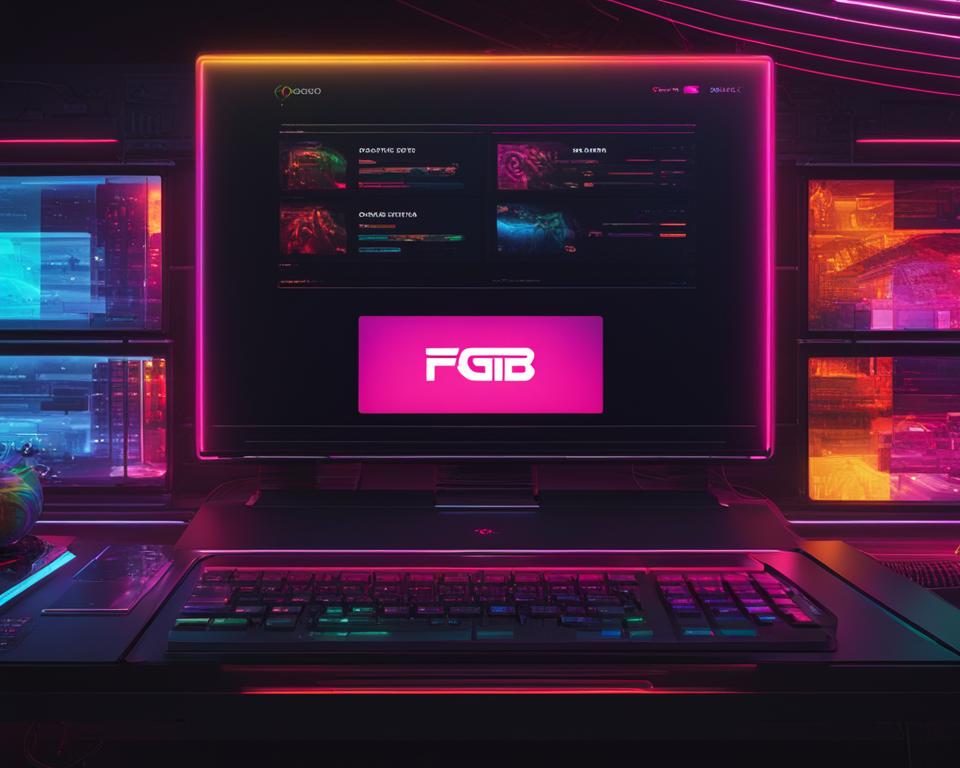
When it comes to controlling the fan speed and RGB lighting on your motherboard, BIOS settings offer a powerful solution. With access to the BIOS, you can fine-tune your system’s performance and customize the RGB lighting to create stunning visual effects.
Hardware Monitor and Fan Control
Within the BIOS, you’ll find the hardware monitor and fan control menus. These menus allow you to monitor the temperature of your components and adjust the fan speed accordingly. You can set the fan speed based on temperature thresholds to ensure optimal cooling performance and minimize noise levels.
The fan control options in the BIOS vary depending on the motherboard manufacturer, but common settings include:
- Preset fan speed profiles (e.g., silent, performance, turbo)
- Manual fan speed adjustment
- Temperature-based fan speed control
- Smart fan control algorithms
- Linking fan speed to CPU or GPU temperature
By experimenting with different fan control settings, you can strike a balance between cooling performance and noise levels to suit your preferences and system requirements.
RGB Customization
The BIOS also provides options for customizing the RGB lighting on your motherboard and other compatible devices. These options are typically found under the peripherals, LED, or lighting menu.
Within the RGB settings menu, you can:
- Select from a wide range of colors
- Adjust brightness levels
- Choose lighting effects (e.g., static, breathing, color cycle)
- Synchronize RGB lighting across multiple devices
With these customization options, you can create a visually stunning lighting setup that matches your style or complements the overall aesthetic of your PC.
Why Use BIOS Control?
The advantage of using BIOS settings for fan speed and RGB control is the system-level control it offers. BIOS settings allow you to fine-tune the performance and aesthetics of your PC, even when the operating system isn’t fully loaded.
Additionally, BIOS control eliminates the need for extra software or third-party utilities. You can manage the fan speed and RGB lighting directly from the BIOS, ensuring compatibility and stability.
| Pros | Cons |
|---|---|
| System-level control | Requires technical knowledge |
| Stable and reliable | Limited customization compared to software control |
| No additional software required | Settings only accessible during boot-up |
“BIOS settings provide a robust and reliable method to control fan speed and RGB lighting. With precise configuration options, users can optimize their PC’s performance and create visually stunning effects.”
By utilizing the BIOS settings, you can unlock the full potential of your motherboard’s fan speed and RGB control capabilities, delivering both enhanced performance and eye-catching visuals.
Remote Control for Fan Speed and RGB Lighting
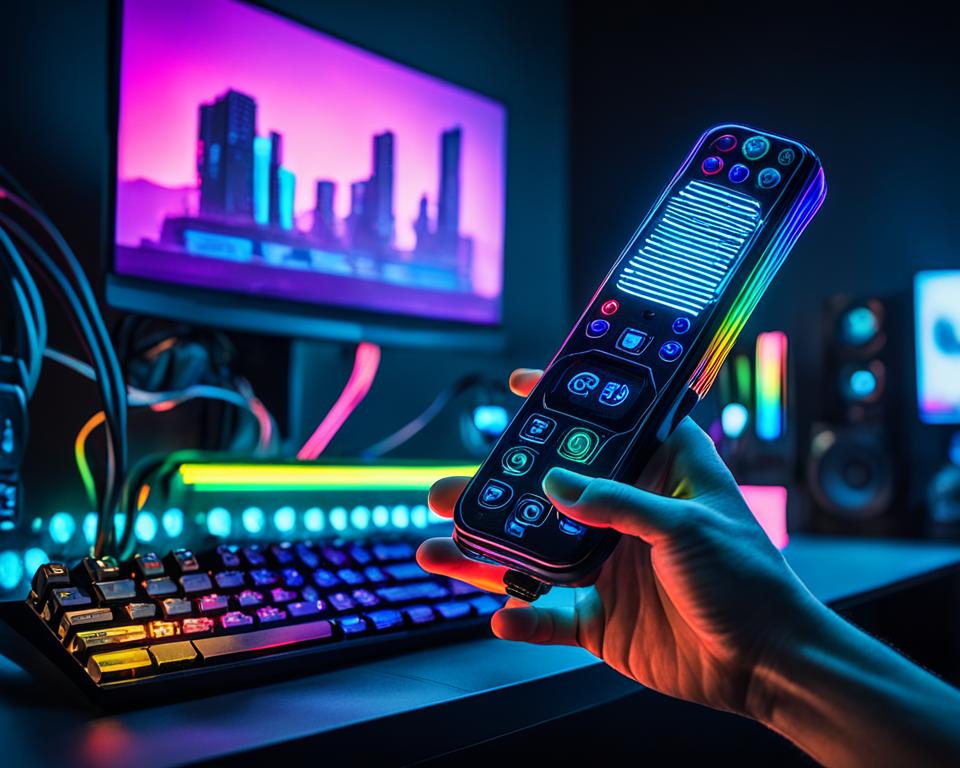
While connecting RGB fans to the motherboard and controlling them through software or BIOS settings is a common method, some enthusiasts prefer the convenience and simplicity of remote control. Certain RGB fans are equipped with a dedicated remote control that allows users to adjust fan speed and RGB lighting without the need for additional software or BIOS configurations.
The remote control typically features buttons that offer options to switch between different modes, colors, effects, and fan speeds. This wireless control method provides an effortless and user-friendly experience, making it easier than ever to customize the lighting and fan settings for your PC.
With the remote control in hand, you can easily change the fan speed to suit your performance requirements, whether you need a higher fan speed for intensive tasks or a quieter operation for everyday use. Additionally, the remote control allows you to conveniently select and cycle through various RGB colors, effects, and modes, transforming your PC’s aesthetics to match your mood or style.
It’s worth noting that remote control capabilities may vary depending on the specific brand and model of RGB fans. While some remote controls may only work with the associated brand’s fans, others may offer compatibility with a wider range of devices or even third-party RGB products. Therefore, it’s essential to consider the compatibility of your remote control with your RGB fans and other components.
Lastly, it’s important to ensure the remote control’s batteries are properly maintained and replaced as necessary to ensure uninterrupted operation. Regularly checking and replacing the batteries will help you avoid any inconvenience or interruption in controlling your fan speed and RGB lighting settings.
The Benefits of Remote Control:
- Convenience: Adjust fan speed and RGB lighting settings effortlessly without accessing software or BIOS configurations.
- Flexibility: Switch between different modes, colors, and effects to create a unique and dynamic lighting display.
- Compatibility: Some remote controls may offer compatibility with a broader range of RGB devices, expanding your customization options.
- Quick and Easy: With the touch of a button, you can instantly modify fan speed or change RGB colors, enhancing user experience.
- Wireless Control: Enjoy the freedom and convenience of controlling your fans and RGB lighting from a distance.
Recommended Remote Control Brands:
| Brand | Model |
|---|---|
| Corsair | Commander PRO |
| NZXT | GRID+ V3 |
| Thermaltake | TT Sync Controller |
| Cooler Master | MF120R ARGB |
Tips and Tricks for Optimal Fan Speed and RGB Lighting
When it comes to optimizing the performance and aesthetics of your PC’s fan speed and RGB lighting, there are several key factors to consider. By following these tips and tricks, you can ensure that your fans are not only providing efficient cooling but also creating a visually stunning RGB display.
- Choose the right size and type of fans: Selecting the appropriate fan size and type is crucial for optimal airflow and pressure within your PC. Consider factors such as fan diameter, blade design, and noise levels to find the perfect balance between cooling performance and quiet operation.
- Plan your fan placement: The layout and orientation of your fans play a significant role in both cooling efficiency and dust prevention. Aim to have more intake fans than exhaust fans to maintain positive pressure inside the case. Strategic placement of fans at the front, bottom, and side of the case can help maximize airflow and prevent dust buildup.
- Experiment with fan curves and profiles: Most modern motherboards and fan control software offer customizable fan curves and profiles. These settings allow you to adjust fan speeds based on temperature, creating a balance between cooling performance and noise levels. Experiment with different curves to find the optimal configuration for your specific needs.
- Explore RGB lighting effects: RGB fans are not only about cooling; they also add a touch of visual flair to your PC. Experiment with different colors, effects, and brightness levels to find the perfect combination that matches your style and enhances your PC’s overall aesthetics.
- Consider fan automation: If you want a hands-off approach to fan control, consider using sensors, timers, or triggers to automate the fan speed based on temperature or system load. This ensures that your PC stays cool and quiet without requiring constant manual adjustment.
- Synchronize RGB lighting: If you have multiple RGB fans in your PC, take advantage of software or hardware solutions that offer synchronized lighting effects. This creates a cohesive and visually stunning RGB display throughout your entire system.
“Optimizing your fan speed and RGB lighting requires careful consideration of fan size, placement, and lighting effects. By choosing the right fans, strategically placing them, experimenting with fan curves, and exploring automated control options, you can create a well-cooled PC with a dazzling RGB display.” – PC Cooling Expert
By implementing these tips and tricks, you can ensure that your PC not only remains cool and well-ventilated but also showcases a visually captivating RGB lighting display. Let your creativity shine through as you fine-tune your fan configuration and lighting effects to create a truly stunning PC setup.
RGB Control Mechanisms: Remote Control and Software
When it comes to managing and changing the RGB fan color on your PC, there are various control mechanisms at your disposal. Two popular options for controlling RGB fans are remote control and software control. Let’s explore these mechanisms in detail:
Remote Control
Remote controls offer a simple and standalone option for managing the RGB fan lights without the need for additional software or motherboard support. With a remote control, you can conveniently change the fan color and lighting effects at the touch of a button. This is an ideal solution for users who prefer a hassle-free experience and easy accessibility.
Software Control
RGB control software, provided by manufacturers like Cooler Master, Corsair’s ICUE, Jacknet RGB, and Acer Mystic Light, provides comprehensive control and customization of RGB lighting effects on compatible motherboards. These software programs offer a range of options, from preset modes to fully customizable lighting profiles. With software control, you have the flexibility to fine-tune every aspect of your RGB fan color and lighting, allowing you to create personalized and dynamic visual displays.
Whether you choose the convenience of remote control or the extensive customization options of software control, you can easily manage and change the RGB fan color to suit your preferences and style.
| RGB Control Mechanism | Features |
|---|---|
| Remote Control | Simple and standalone control |
| Software Control | Comprehensive customization options |
Step-by-Step Guide to Changing RGB Fan Color
To change the RGB fan color on your PC, follow this step-by-step guide:
- Identify your RGB control mechanism
Before you begin, determine whether you are using a remote control or software control to change the RGB fan color. This will help you navigate the appropriate steps for customization.
- Install the necessary software
If you are using software control, install the software provided by the manufacturer. Ensure that the software is compatible with your motherboard. This step is crucial as it enables you to access and modify the RGB fan settings effectively.
- Connect your RGB fans to the motherboard
Refer to the manufacturer’s instructions to identify the appropriate motherboard headers for connecting your RGB fans. It is important to make the correct connections to ensure the fans are properly powered and controlled.
- Launch the software program
If you are using software control, launch the software program that you have installed. The program will provide you with a user-friendly interface to customize the RGB fan color and lighting effects.
- Select the desired fan color and lighting effects
Using the software program’s interface, navigate through the options to select the desired fan color from a range of hues and lighting effects. Experiment with different combinations to find the perfect look for your PC.
- Save and apply the changes
Once you are satisfied with your RGB fan color selection, save the changes in the software program. Apply the changes to see your PC come to life with vibrant RGB lighting.
“Customizing the RGB fan color on your PC is a creative way to personalize your computer setup and elevate its aesthetics.”
Enhancing Your PC Aesthetics with RGB Fan Color
Customizing the color and lighting effects of RGB fans is a fantastic way to enhance the aesthetics of your PC setup. With the ability to connect these fans to your motherboard and control them using various mechanisms, you can elevate your computer rig to a whole new level. Whether you’re a gamer looking for a personalized lighting setup or a creative professional aiming to create a vibrant workspace, RGB customization offers endless possibilities.
By fine-tuning the RGB fan colors, you can transform your PC into a visual masterpiece that reflects your unique style and preferences. From subtle color shifts to bold and vibrant displays, the choice is yours. With the variety of control mechanisms available, such as software control and remote control, achieving the perfect color display is both accessible and conveniently within reach.
Imagine a custom PC setup that radiates a dazzling array of colors, creating an atmosphere that immerses you in your favorite games or boosts your productivity. With personalized lighting options and the ability to synchronize RGB effects across different components, you can create a cohesive and captivating look that will leave a lasting impression. So don’t hesitate to explore the world of RGB customization and elevate your PC’s visuals to awe-inspiring heights.

